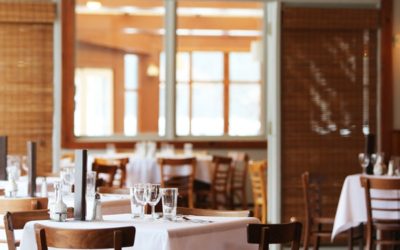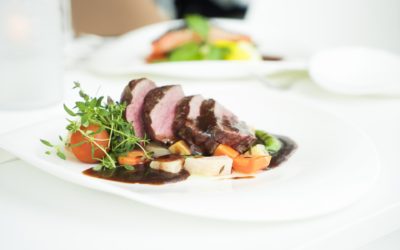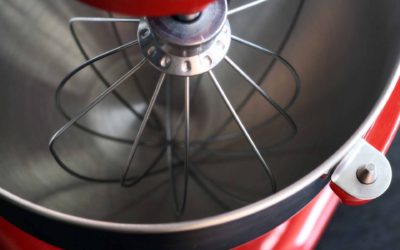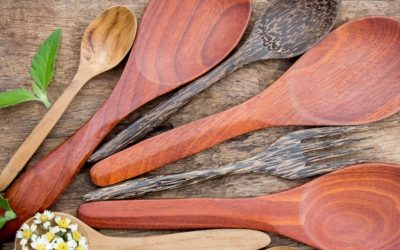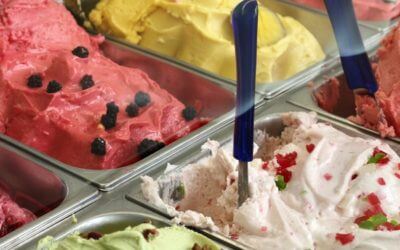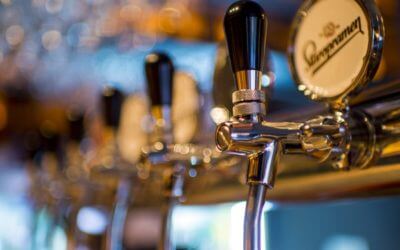How to Run an Energy-Efficient Restaurant
June 9, 2017You probably don’t need to be reminded of the high cost of electricity in running a restaurant compared to an energy-efficient restaurant.
Right now, many establishments, including restaurants, are going green and adopting eco-friendly strategies to conserve energy. Going green won’t just lower the cost of your restaurant’s electricity bill. It will also boost your brand by showing customers that you’re being a responsible member of your local and global community. To get started on the path to an energy-efficient restaurant, check out our tips below.
- Know How Much Energy You’re Using
You can only ascertain this by contacting your electricity company. They will provide a breakdown of what your electricity consumption looks like and the cost of what you are using. With that in mind, you can set goals in terms of reducing your usage and aiming towards an energy-efficient restaurant.
- Use Only Energy Star Equipment
You can’t do without ovens, grills, refrigerators, and many other kitchen essentials. What you can do without is the guzzling of electricity by these appliances. Now is the time to shift to energy-efficient restaurant equipment that use a fraction of the energy that older models use.
Replacing equipment can be expensive, so you may want to start by first replacing your oldest equipment and making a plan to phase out the rest of your energy-intensive appliances over time. With the savings on your utility bill, you will save money over the long run.
- Cut Down on Heat Usage
Heat is absolutely necessary for an energy-efficient restaurant, but its usage can be reduced to save costs if you have the willingness to do so. One simple way is to optimize your water temperature so that it’s not any hotter than it needs to be. Even for dishwashing, ensure you are not going far above the 140 degrees Fahrenheit stipulated by NRA.
- Shut Down Idle Equipment
You may not believe this, but just like every other restaurant, you are probably wasting hundreds of dollars on idle equipment. Instruct your staff to turn off equipment when it’s not being used. You can a go a step further by using timers for outdoor lighting. Boom, now you’re one step closer for an energy-efficient restaurant.
- Maintain and Service Equipment Regularly
You’re overworking your restaurant equipment if you’re not servicing and cleaning it regularly. Any worn out parts of your dishwasher, toasters, sandwich makers, ice machines and refrigerators should be replaced for a more more energy-efficient restaurant.
- Use Only Energy-Efficient Restaurant Lighting
Energy-efficient restaurant light bulbs are easy to install and they save you money on your electric bill. For the most energy savings, use energy efficient light bulbs everywhere – including the dining area, the kitchen, the bathrooms and outdoor lighting.
- Adjust Your Kitchen Layout
If your oven is near your ice machine, both appliances will require more energy to maintain their temperatures. There must be a separation between heating and cooling systems. Keep similar systems together and away from others.
5 Keys to Creating the Perfect Restaurant Seating Areas
Restaurants are about so much more than just food. From the setting and layout of your restaurant to your choice of colors, it takes a lot more than an appealing menu to keep diners coming back for more. When setting up your restaurant, booths and chairs are important...
5 Essential Buying Tips for Your Next Food Prep Work Table
The right foodservice equipment is pivotal to the efficiency of your kitchen. One of the most important types of foodservice equipment for any kitchen is the work table. With limited room on countertops available for your food prep needs, the cooking process can drag...
Tips for Keeping Your Commercial Sink Sparkling Clean
Your commercial kitchen, just like your personal kitchen, must be kept clean at all times. With all of the cooking and food processing you do, it is inevitable that your sink gets messy. Cleaning up your commercial kitchen is incomplete without proper cleaning of your...
Food-Cutting Secrets to Beautiful Dishes
In the restaurant industry, presentation is often said to be just as important as the food itself. Using the right knowledge, skills and restaurant supplies, you can incorporate creativity into your presentation, making guests feel that they are getting something...
Top Space-Saving Tips for Commercial Kitchens
Top Space-Saving Tips for Commercial Kitchens Space is always an important consideration when setting up a kitchen, and this is even truer for commercial kitchens. With a strong focus on functionality and the kitchen supplies that meet the needs of your commercial...
5 Ways to Get the Most Out of Your Mixer
No one wants to eat off of dirty or tarnished silverware. A stand mixer is a highly useful piece of kitchen equipment to invest in. Although this type of kitchen equipment does not usually come cheap, it can last a lifetime when properly cared for. Despite all your...
Restaurant Prep Tool Selection Simplified
What’s a restaurant kitchen without high-quality prep tools that can withstand the pressure of frequent use? Whether you already have a restaurant you’re running, or you’re just planning to launch one, one vital factor that could make or mar your business is how you...
Beginner’s Guide to Choosing a Commercial Ice Cream Freezer
Ice cream is a delicious and appealing desert treat for everyone, young or old. Having made the decision to sell ice cream to your customers, whether you have a restaurant, convenience store, or specialty ice cream parlor, it is time to begin stocking up on the right...
How to Choose the Right Kitchen Scales for Your Restaurant
A food scale is an essential item in every restaurant’s store of kitchen supplies. Designed to take the guesswork out of food measurement and maintain consistent food serving sizes, food scales are indispensable kitchen supplies in the commercial kitchen. With such a...
Beer Chilling Systems: Which Type Is Right for My Restaurant?
A refrigeration unit is integral to the functioning of any restaurant. Beers are best served cold - there’s no questioning that! But which beer chilling system is the best? From reach-in coolers to glycol chillers, a beer chilling system is an important piece of...
What Equipment Will I Need to run a Food Truck?
There’s a lot of planning that goes into starting your own food truck business. Before you hit the road with your delicious food offerings, you’ll need to fill up your truck with all the right foodservice equipment. Considering the lengthy list of possible items to be...
8 Types of Food Thermometers: What You Need To Know
Food thermometers are essential restaurant supplies for your commercial kitchen. They ensure that foods prepared in your commercial kitchen are cooked to the right temperature and held at that temperature for as long as necessary to kill any harmful bacteria. This...
How to Identify the Best Food Processor for Your Needs
Highly versatile and extremely efficient, food processors are designed to take away the hard work from repetitive kitchen activities. This type of cooking equipment can quickly become an invaluable tool in your kitchen. From chopping, to shredding, grinding, mincing,...
6 Keys to Choosing the Best Chafing Dishes for Your Restaurant
The chafing dish, also known as the chafer, is an essential piece of restaurant equipment for any establishment that wants to keep food hot. This type of restaurant equipment gets its name from the French word, chauffer, which means to heat, and it’s easy to see why....
Turning up the Dial on Commercial Fryers: How to Choose One for Your Restaurant
Fried food is a well-loved favorite. This is a fact. It also makes a fryer an important piece of equipment to have in your commercial kitchen. Just consider how many appetizers and sides require frying: onion rings, French fries, and fried green tomatoes are just a...

